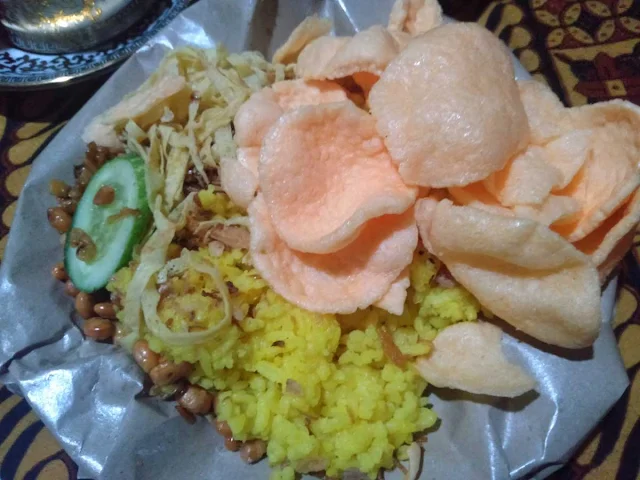If we examine it, there are many types of breakfast eaten by Indonesian people. They like fried rice to start their days of activities. Among them also like fried foods such as bakwan, tahu isi (stuffed tofu), fried sweet potato, fried cassava, cireng, fried banana, and so on. In addition, they choose chicken porridge for breakfast, uduk rice, lontong, and so on.
This time I will tell you about the uniqueness of nasi kuning which is used as breakfast by the Sundanese people (West Java Province). Uniquely, this rice is indeed yellow. Don't worry, this rice uses natural dyes that are safe for your body. What is natural dye? namely turmeric. That's right, turmeric is a type of tuber plant that is used as a cooking spice in Indonesia. Turmeric is used as a seasoning for curry or other dishes. In addition to being a cooking spice, turmeric is also used as a medicine. They like medicines that are mixed into herbal medicine, such as turmeric and tamarind herbal medicine (to treat the digestive tract, treat bloating, soften the skin and smooth menstruation), antiseptic medicine to fight germs, even turmeric is used as an appetite enhancer (in children). So it can be said that turmeric has many benefits. It can be said that when you eat nasi kuning you get a source of energy and other important substances from nasi kuning band a myriad of benefits from a plant called turmeric.
 |
| Chope ID (Restaurant) |
A brief history of nasi kuning, it was originally made for religious events and other big events in the kingdom. Nasi kuning symbolizes prosperity. This can be seen from the color of the nasi kuning itself, which is yellow. Yellow represents the color of gold, and gold is indicated as prosperity. In the following period, nasi kuning has been used as breakfast or daily food for people in the West Java region.
Nasi kuning for our family is not something foreign to our tongue. Sometimes we buy it at a breakfast stall near our house or one that is sold with a pushcart. The nasi kuning that is served is usually added with stir-fried tempeh (tempeh is a fermented food made from soybeans), cucumber, crackers, omelettes, and sambal (a typical Indonesian seasoning with a spicy taste) to add flavor. In general, we like nasi kuning. The nutrients we need are quite adequate in this nasi kuning food. We can get carbohydrates and calories from rice, protein and vitamins from tempeh and eggs, and the vegetables in it. If you are an egg lover, you can also add boiled eggs to this menu. Usually, the seller also provides boiled eggs for those who like it. How about the taste? I think this taste is most likely acceptable to the taste buds of the world community. This taste is savory, the spices are just right and not too strong. So you don't need to worry about the taste of this nasi kuning if you travel to Indonesia, especially the West Java Province. You can find nasi kuning on the side of the road, near tourist areas or at the hotel you are staying at. Usually nasi kuning is priced at a relatively affordable price, around Rp. 10,000 to Rp. 20,000, some even cost Rp. 8,000 (in small cities or villages). That is, this price is only around $ 1 (can be less or more).
That's all the articles from me, hopefully this information is useful. Thank you for reading this article. Have a nice day.
 |
| Chope ID (restaurant) |
More on Indonesian Food:



No comments:
Post a Comment